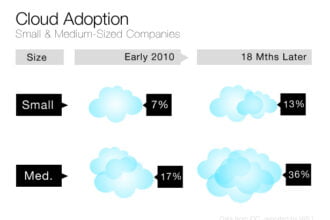Doctors and healthcare professionals are not strangers to poor work life balance. A very strong culture surrounds this industry that perceives a doctor wishing to lead a healthy personal life as a sign of weakness.
It is not uncommon to see doctors resign to the demands of the job and the medical culture system, leading to unhealthy suppression of their personal goals and requirements. No doubt that for some medical professionals, the passion for work overrides the stress and the burning out, but for others, constantly trying to cope with the unwritten but powerful psychological contract of “if you cannot work 18 hours a day and seven days a week, you don’t belong here” can be very overwhelming.
It’s usually only a matter of time until physicians begin to deal with ill health, depression, reduced efficiency and quality of work, lack of focus, fatigue-related medical errors, struggling personal and professional relationships and severe job dissatisfaction to the extent that many end up reconsidering their decision of being in the medical profession submitting to “maybe I’m not wired for this!”
Yes, there are caps on the number of duty hours for doctors. However, the increasing influence of consumerism on the national healthcare system and the growing demands of federal policies call in for greater accountability, increased bureaucracy and a ton of paperwork and administrative chores left to be performed by physicians themselves. This corporatization of work structure compels them to digress from their primary job of providing healthcare to completing clerical and managerial work that now ends up taking the best of their time and productivity, defeating the very idea of Meaningful Work.
In such a situation and keeping in mind the perfectionists that doctors are, one way for them to strike a healthy work life balance without compromising on their productivity or performance would be to focus the best part of their energy and work day on their actual job – that of being good clinicians and reduce the amount of time, effort and personal attention they put into peripherals like paperwork, clinic management and other administrative functions.
This article aims to suggest help on how physicians may save time on these subordinate activities by using technological tools that will enable them to complete the same tasks quickly and efficiently, leaving them more personal time and a better organized work day.
7 Must-Use Technological Tools for Physicians
1.) Email
Physicians must leverage the power of this simple tool to reach out and connect to their patients without having to extend their workday. Communicating via email can be less intrusive and time consuming as opposed to personal telephone calls as it allows for multitasking, automation, bulk mailing and standardization of regularly used content.
Appointment reminders, medication alarms, direction maps and instructions can be sent out to patients through an automated, pre-programmed system that monitors all your email communication.
2.) Medical Website
In a world where people turn to the Internet for nearly everything, having a web presence not only helps you reach out to a global audience but is also a time saver for functions like briefing new patients about your practice, answering FAQs, providing critical information, clinic details, directions and patient support. For physicians looking to set up a website, a good place to begin would be http://www.websitesordoctors.in
3.) Spreadsheet programs like Microsoft Excel
If you haven’t already discovered the treasures of Ms Excel and still go the old pen and paper way to record your administrative activities, insurance, tax, bank and financial details, stocks, inventories and everything that makes up your practice, you are missing out on a tool that can transform your work day and save you a ton of time and trouble. Ms Excel is simple to learn, easy to use and will spoil you for convenience once you’re in the habit of using it. For free online training in Ms Excel, visit http://office.microsoft.com/en-us/excel-help/CH010369467.aspx.
4.) PDAs and Smartphones
A personal digital or data assistant (PDA) can be used to save all your information paperlessly, in one single place. This information is portable and can be made available on your laptop, phone and other devices. PDAs can be used to store patient contacts, records, medical and other information, drug databases, crucial spontaneous notes, treatment information etc. E-books, medical databases, research and information can also be stored and accessed. You can use them to schedule your day, post reminders for important tasks and have all the information you need in the palm of your hand whenever you need it.
5.) Medical Software such as an Electronic Medical Record(EMR)
EMRs collect and consolidate all patient information into a single integrated system that can be accessed at the click of a mouse. Without having to look through heaps of paper files, EMRs allow for quick and convenient access to the patient’s medical history, list of medications, drug allergies, test results and information, helping physicians make faster, accurate and more informed medical decisions, diagnoses and treatments. They also enable instant and simultaneous EMR sharing with other care providers, saving on a whole lot of time that would otherwise be spent in viewing, reviewing and communicating results with other practitioners.
6.) Smartphones/Tablet PCs
Smartphones are poised to be the next big thing in Healthcare IT. The power of portable information and being connected on the go is sure to lend physicians greater autonomy and flexibility of work schedules. Smartphones and tablets can be synchronized with your office and home computers, PDAs etc and can be used to access this and other medical information from any place in the world. You can effectively use them to do your day’s reading or wrap up pending documentation and record work while commuting or even at home. A good article on using smartphones to improve your practice can be read at http://emrmeaningfuluse.blogspot.com/2011/08/how-can-smartphone-help-you-in-your.html
7.) Videoconferencing and Tele-consultations
Physicians can use videoconferencing tools like Skype to provide tele-consultations to patients based in remote locations. They can also carry out pre-appointment screenings, post-appointment follow ups and monitoring from home, saving themselves and their patients commuting time and making for a shorter work day. To learn more about videoconferencing and Skype, visit http://emrmeaningfuluse.blogspot.com/2011/09/using-skype-to-help-your-practice.html
These technological tools can be used to reduce the time and effort spent on administrative functions (and certain clinical functions too!). If a routine break up of your day is say 70% of seeing patients and 30% of filing paperwork and records, you can use these tools to work on bringing down the 30% average or even taking it home (easier for solo practitioners) as all the information is digitally available to you, wherever (and whenever) you choose to use it.
Yes, taking work home is a debatable idea for many families but for physicians, it is really a case of being home at a good hour at least physically vs not being there at all. The trick here is to not get into a habit of “staying connected” all the time, using technology to only accomplish what is required for the day and switch off once you’re done.






